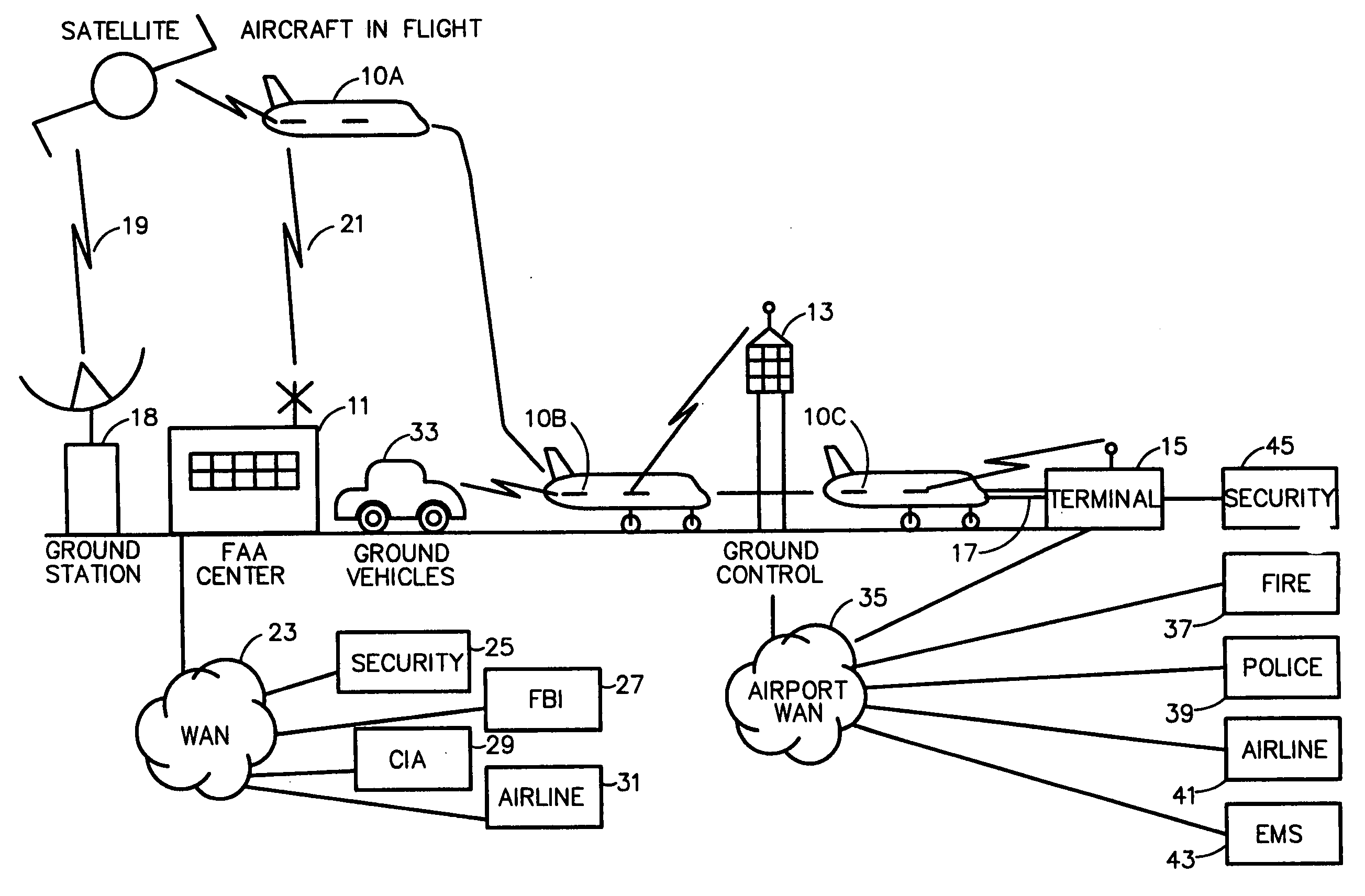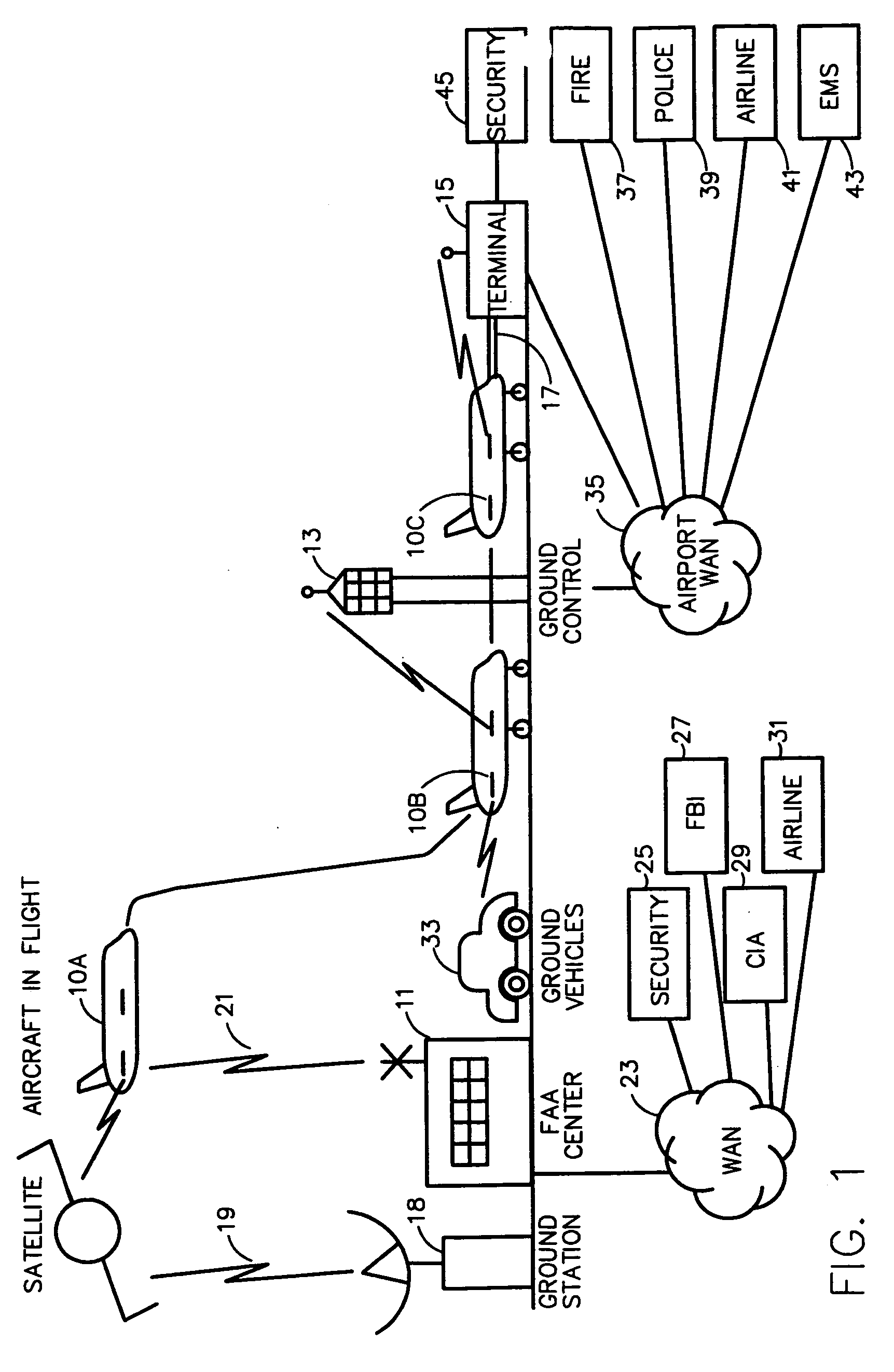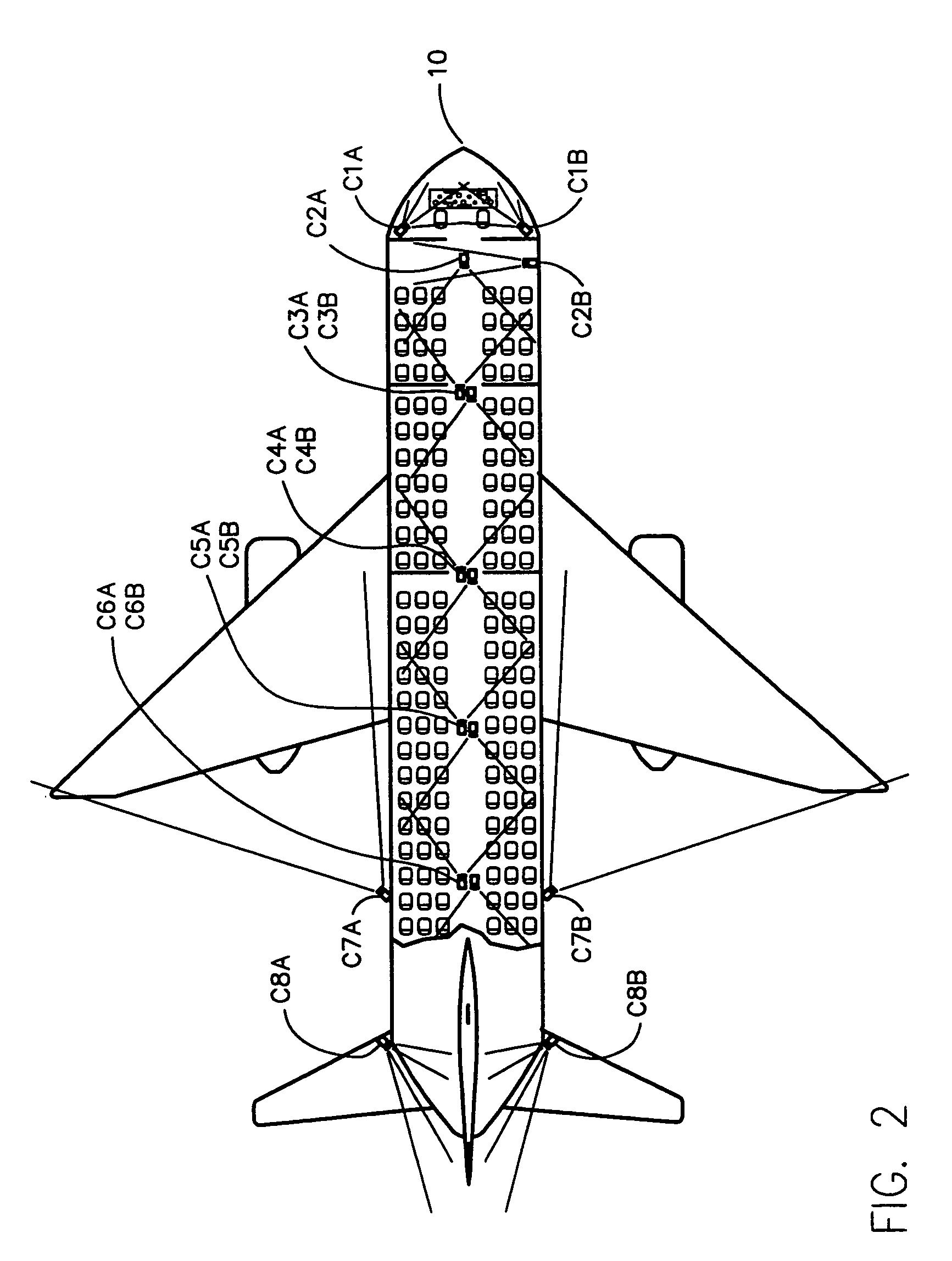In addition, with increasing numbers of private and commercial flights occurring, larger numbers of incidents and accidents are happening.
The causes of many of these events, particularly those that have catastrophic outcomes such as mid-air explosions and crashes, remain unknown.
Recovery operations and investigations can be exceedingly costly with uncertain outcome.
The lack of totally conclusive evidence has left the victims families without closure, has set the ground for enormously expensive and complex litigation on the matter, and has not allowed preventative measures to be taken.
While the data collected and transmitted by this equipment provides useful real-
time information to the flight
crew and is useful in reconstructing the cause and effect of catastrophic incidents, the systems of the prior art have shortcomings reducing the effectiveness of the data.
Typically, the systems of the prior art will stop collecting data once there has been a
structural failure of the
airframe or a disruption in aircraft power.
This is because the transmission of power to the collectors is disrupted or because the aircraft power source ceases to operate.
Flight Data Recorders are subject to damage or loss as a result of the catastrophic event, thus the critical information needed to determine the cause of the incident is lost.
Further, with these systems there is no mechanism for automated real-time “event detection” and notification, nor is there any manner for the
crew of the transport to “trigger” the system to provide notification of an emergency situation to operations and response personnel.
Prior art systems do not have the capability of collecting and relaying such information, and further, are not ‘intelligent’ in the modem sense; they merely provide an ‘ON / OFF’ indication or analog meter readings to the centralized
monitoring system.
The implementation of onboard sensor systems are not ‘networked’ in the modem sense; they are generally hard-wired to the centralized
monitoring system via a ‘
current loop’ or similar arrangement, and do not provide situational data other than their ON / OFF or meter status.
This technology is unusable for high-speed aircraft traveling at high altitudes and covering a large
terrain.
Although the
military systems can transmit images over long distances utilizing military satellites, the limitations on this system prevent transmission of full-motion images and prevent transmission over commercial circuits because of the specialized nature of the military radios and
encryption devices that are utilized.
Video surveillance systems in common use today are ground based systems and are particularly dated—they are generally of low capability, using analog signals conveyed over coaxial or, occasionally, twisted-pair cabling to the centralized local monitoring facility.
Further, such systems generally do not have the ability to ‘share’ the captured video, and such video is generally viewable only on the system control console.
In each case, the video is subject to degradation due to the usual causes—cross talk in the wiring
plant, AC
ground noise, interfering carriers, distance limitations, and so on.
Due to the bandwidth constraints imposed by the public-switched telephone system, such systems are typically limited to low-resolution images, or low frame rates, or both.
These often low cost cameras use digital techniques for transmission, however their use for security surveillance is limited by
low resolution and by slow refresh rates.
Thus, for a
security system, the installation cost and effectiveness is limited with the unwieldy restriction of requiring a PC at each camera.
Each of these prior-art systems suffers functional disadvantages.
The low-
bit rate approach can deliver the video
signal to a remote monitoring facility, but only with severely degraded resolution and
frame rate.
While useful, this approach lacks the functional flexibility possible with more modem networking technologies.
Other hardwired systems have been used, such as fiberoptic cable and the like, but have not been widely accepted primarily due to the higher costs associated with such systems over
coaxial cable.
This type of system provides an economical link but does not provide transmission over significant distances due to the power constraints placed on the system.
It is also highly susceptible to interference due to the low power levels and shared frequency assignments.
However, the cost is usually much higher per unit, the number of channels is limited and system performance can be greatly affected by building geometry or nearby electrical interference.
Further, the video is not as secure as hardwired systems.
The video may be picked up by anyone having access to the channel while in range of the
transmitter and is thus, easily detected and / or jammed.
Another area that is difficult to implement with current
closed circuit television systems is the control of lenses, tilt / pan mechanisms, and other video adjustments.
Most installations do not attempt this level of control because of the expense of running additional wiring and installing additional controller devices required to control these mechanisms.
A few companies have provided tilt and pan control multiplexed onto the coaxial video cable utilizing proprietary techniques, but these have not been popular due to the proprietary nature of the method.
While commonly available and relatively low in cost, each of these circuits is of
narrow bandwidth and incapable of carrying “raw” video data such as that produced by a
full motion video camera, using rudimentary compression schemes to reduce the amount of data transmitted.
Each of these standards has certain advantages and disadvantages depending upon the volume of data, required resolution and costs targets for the system.
Internet VTC may be accomplished at 33.6 KBPS over dial-up modems, for example, but is of low quality.
While such devices are useful for their intended purpose, they typically are limited in the amount of data which may be accumulated and / or transmitted because they do not rely on or have limited compression.
Many of these are personal communications systems and do not have the resolution, the
refresh rate required or the security required to provide for good surveillance systems.
However, such products are limited or difficult, if not impossible, to use for security applications because the resolution and
refresh rate (
frame rate) of the compressed motion video is necessarily low because of limited resolution of the original sample and the applications of significant levels of video compression to allow use of the low bandwidth circuits.
The
low resolution of these images will not allow positive identification of persons at any suitable distance from the camera for example.
The
low resolution would not allow the reading of an automobile tag in another example.
As these devices, particularly
digital video cameras and encoders, come in more widespread use within a system, the amount of bandwidth required to transmit continuous, “live” images from an array of cameras is staggering.
This is an even greater problem when
retrofitting current facilities where it is desired to use current wiring or to incorporate
wireless networking techniques.
Even where the conduits are of sufficient capacity to
handle the data load, storage and retrieval becomes an enormous task.
None of the prior art systems permit structured and controlled notification based on the identification of events as they occur.
Even those that do permit some limited notification, for example, alarm systems sending a telephone
signal to a monitoring
station, do not provide detailed event information.
While such a system would be of great benefit to the commercial transport and airline, security and law
enforcement and
emergency response industries in general and to the commercial airlines in particular, there is not an integrated system currently available adequately meeting these needs.
 Login to View More
Login to View More  Login to View More
Login to View More 


